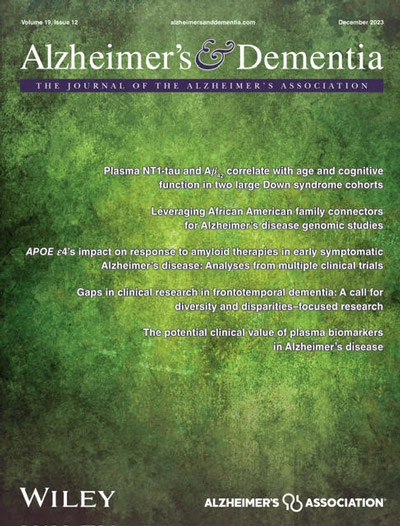Plasma protein risk scores for mild cognitive impairment and Alzheimer's disease in the Framingham heart study
Abstract
INTRODUCTION
It is unclear whether aggregated plasma protein risk scores (PPRSs) could be useful in predicting the risks of mild cognitive impairment (MCI) and Alzheimer's disease (AD).
METHODS
The Cox proportional hazard model with the Least Absolute Shrinkage and Selection Operator penalty was used to build the PPRSs for MCI and AD in 1515 Framingham Heart Study Generation 2 with 1128 proteins measured in plasma at exam 5 (cognitively normal [CN] = 1258, MCI = 129, AD = 128).
RESULTS
MCI PPRS had a hazard ratio (HR) of 6.97 [5.34, 9.12], with a discriminating power (C-index = 82.52%). AD PPRS had a HR of 5.74 [4.67, 7.05] (C-index = 88.15%). Both PPRSs were also significantly associated with cognitive changes, brain atrophy, and plasma AD biomarkers. Proteins in the MCI and AD PPRSs were involved in several pathways related to leukocyte, chemotaxis, immunity, inflammation, and cellular migration.
DISCUSSION
This study suggests that PPRSs serve well to predict the risk of developing MCI and AD as well as cognitive changes and AD-related pathogenesis in the brain.
Highlights
- PPRSs were developed for the risk of AD and AD preclinical stage, MCI.
- PPRSs were developed for MCI and AD associated with cognitive changes, loss of brain volume, and increasing level of plasma AD biomarkers.
- Leukocyte, chemotaxis, immunity, inflammation, and cellular migration enriched in proteins were identified as being involved in MCI and AD PPRSs.


 求助内容:
求助内容: 应助结果提醒方式:
应助结果提醒方式:


